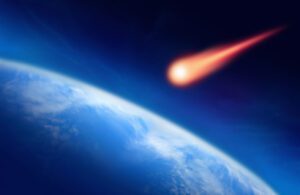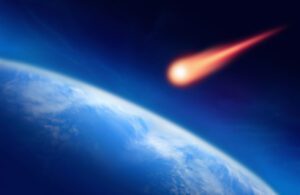Between the Russian meteor and the close flyby of asteroid 2012 DA14, the cosmic lightshow of February 15, 2013 reminds us to keep observing newly discovered asteroids in space. Arecibo Observatory has the most sensitive asteroid-tracking and imaging radar on Earth.

Rocky debris in our solar system occasionally collides with Earth. The luminous meteor, or bolide, over Chelyabinsk, Russia on February 15 was estimated to be a from rock 15 meters (50 feet) in diameter moving at 18 km/s (40,000 mph).
The object detected over Russia was not seen before it hit the Earth, but this is not surprising: numerous objects of similar size frequently pass by the Earth undetected. One exception was the asteroid 2008 TC3, which was much smaller–about 2-5 meters (5-15 feet)–discovered about one day before it impacted over the Sudan in North Africa.
An asteroid unrelated to the Russian bolide, 2012 DA14, passed safely by Earth on the evening of Friday, February 15. Discovered nearly a year ago by astronomers with an optical telescope in Spain, DA14 flew by well beyond Earth’s atmosphere and posed no threat to Earth. Scientists estimate DA14 to be 30-50 meters in diameter (100-150 feet), about 2-3 times the size of the Russian bolide.
This asteroid was not visible at Arecibo Observatory because it was on the other side of the Earth at the time of its passing. By the time DA14 was visible from the rest of Puerto Rico, the asteroid was too far north for Arecibo to see, due to the range of motion of the radio telescope.
Many objects in the size range of DA14 pass by the Earth all the time, and many have hit in the past: craters on both the Earth and Moon serve as evidence of past asteroid impacts. However, the sizes of asteroids that would do serious damage on a global scale are much larger, and most large asteroids have now been found and are known to be safe. No asteroids of diameter 1 km and larger have a significant chance of impacting the Earth in the next several hundred years.
While the exploding bolide over Chelyabinsk was classified as non-hazardous to the Earth, the injuries to 1,200 people in the city as well as the destruction of buildings due to sonic booms underscore the importance of discovering and characterizing larger asteroids before they hit us and cause significantly more damage. Should an asteroid pose a risk to Earth, knowing its orbit and size can help in planning impact mitigation to protect our planet.
The Arecibo planetary radar system is the most sensitive system in the world for detecting near-Earth asteroids and improving our knowledge of their orbits, and thus calculating the risks of potential impacts. As optical telescopes discover new asteroids, scientists at Arecibo Observatory and the less-sensitive but more flexible Goldstone radar in California conduct follow up observations using radar and measure the distances, sizes, and spin rates of these asteroids. Radio observations from Arecibo Observatory dramatically improve our knowledge of these asteroids’ orbits, as well as their impact risks.
Arecibo Observatory scientists are currently aiming the planetary radar system at asteroid (99942) Apophis; previous Arecibo and Goldstone radar observations of this 325 meter (1,070 foot) -wide asteroid have ruled out possible Earth impacts in 2029 and 2036.
Located in Puerto Rico, the Arecibo Observatory is home to the world’s largest and most sensitive single-dish radio telescope. The Arecibo Observatory is operated by SRI International under a cooperative agreement with the National Science Foundation (AST-1100968), and in alliance with Ana G. Méndez-Universidad Metropolitana, and the Universities Space Research Association.
The Arecibo Observatory is sponsored by the National Science Foundation. Any opinions, findings and conclusions or recommendations expressed in this publication are those of the author(s) and do not necessarily reflect the views of the National Science Foundation.



